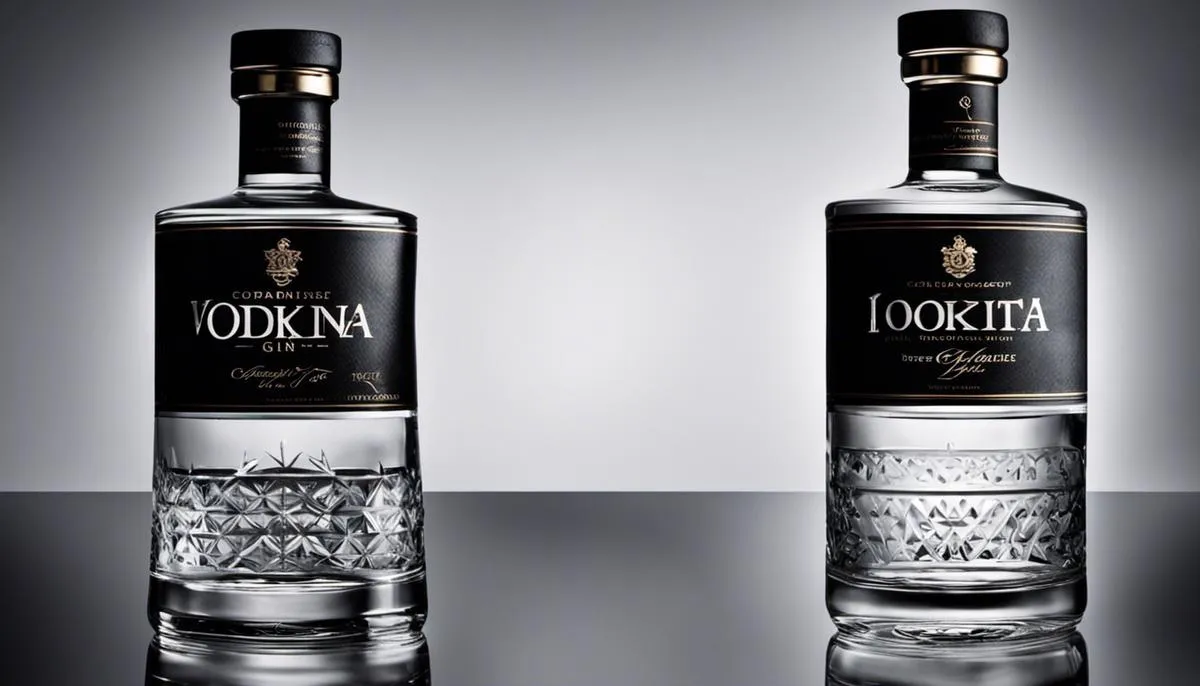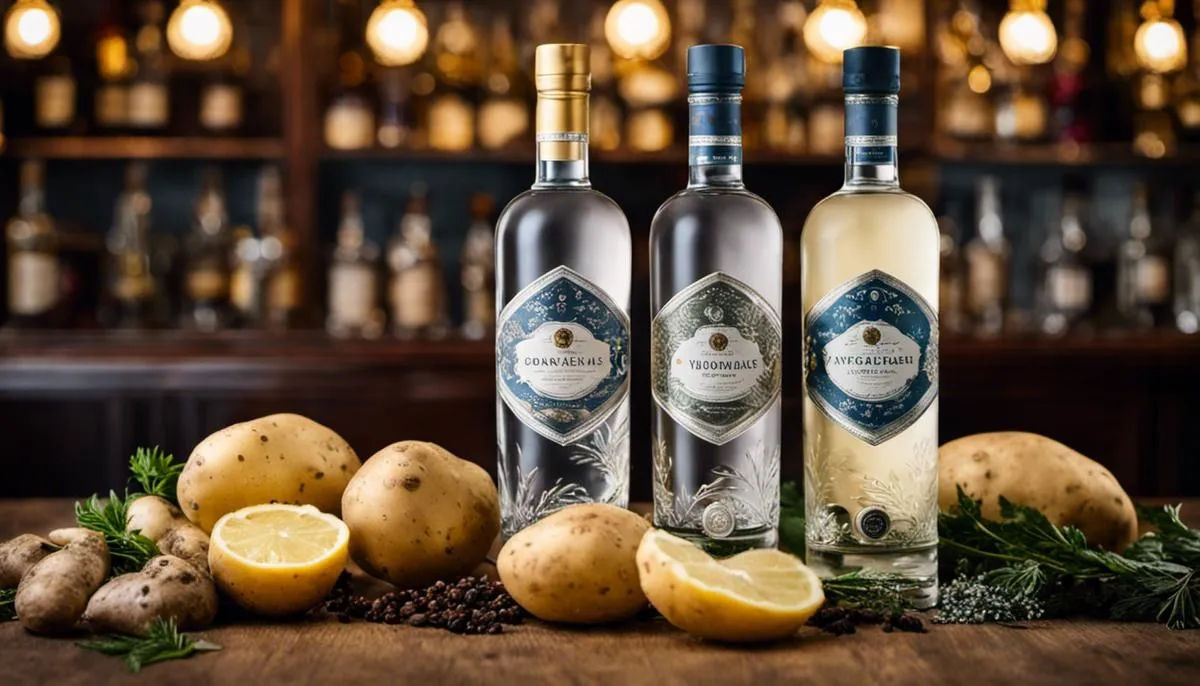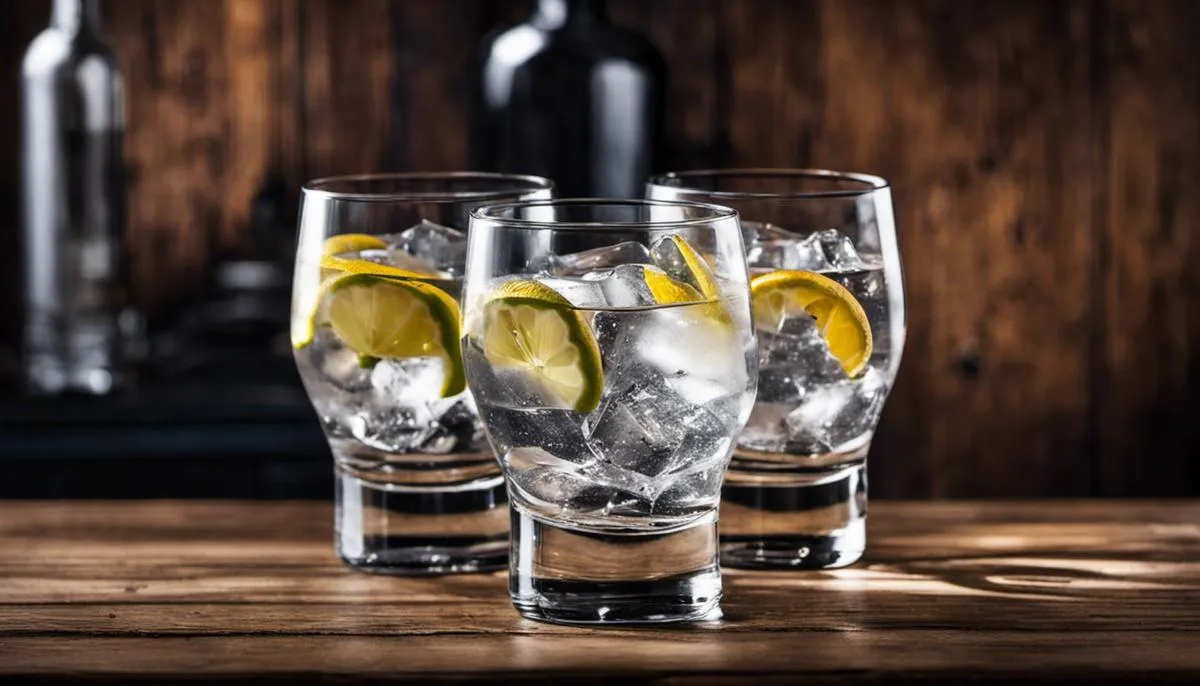Whether enjoyed in a cocktail or savored neat, gin and vodka have cemented their places on the shelves of bars, and in the hearts of enthusiasts, the world over. These two spirits, while having distinct differences, share a common thread of rich history and complex production processes. Tracing the paths of gin and vodka from their origins in the early European distilleries to the elevation of their cultural and societal status, we embark on a journey through centuries of distillation evolution. Understanding their unique production processes unfurls the magic behind the flavors, adding a new dimension to the tasting experience. Diving into the nuances of their taste profiles, paired aptly with accompaniments, enriches our appreciation of these spirited drinks.
Historical Background and Origins
Historical Background of Gin
Gin’s roots trace back to the jenever liquor of the Netherlands, dating back to the 13th century. The term “gin” comes from an English shortening of the word “genever,” the Dutch word for juniper, which is the defining botanical in gin. Initially, gin was manufactured for medicinal purposes, touted as a treatment for ailments such as gallstones and gout.
The spirit gained popularity in England during the 17th century when William III, also known as William of Orange, occupied the English throne. It was during this time that the gin industry began to thrive as distilling processes improved and taxation on beer and ale prompted the English public to turn its attention towards gin consumption.
The Gin Act of 1736, which imposed heavy taxes on retailers, led to a significant decline in gin consumption, marking the end of what was referred to as the ‘Gin Craze’. The advent of continuous column distillation in the early 19th century helped rejuvenate the gin industry, leading to the production of the lighter, smoother, and sweeter style of gin commonly known today.
Historical Background of Vodka
Vodka, on the other hand, originated in Eastern Europe, with both Russia and Poland claiming its invention. The name “vodka” comes from the Slavic word “voda,” translating to “little water,” a nod to its clear, pure appearance. Unlike gin, vodka was not initially produced for medicinal purposes. Instead, it was consumed as a recreational beverage or as part of religious rituals.
The earliest recorded production of vodka in Russia dates back to the late 9th century. However, it became a significant part of Russian life in the 14th century after the institution of a state monopoly under Tsar Ivan III. This allowed for the standardization of vodka production, leading to the creation of the spirit known and consumed widely today.
Like gin, vodka experienced periods of fluctuating popularity due to political and economic events. Despite this, vodka became synonymous with Russian cultural and social life. In Poland, vodka played a crucial role in ceremonial and social gatherings, remaining integral to the Polish culture.
The Societal and Economic Impacts of Gin and Vodka
Gin and vodka have been the backbone of significant cultural and commercial activities in their respective regions. For instance, the UK saw the rise of gin as a booming domestic industry, even outstripping the economic profits from beer and ale. This economic impact was not limited to just pounds and pence; the country experienced a ‘Gin Craze,’ displaying the gin influence on the society.
On the other hand, vodka, as a national drink of Russia and Poland, etched an indelible mark on their social norms and commercial affairs. The vodka production, whether from homemade micro-distilleries or large-scale commercial facilities, consistently added a substantial value to these nation’s economies.
In terms of market size, gin’s share may be smaller, but it still manages an intense fan base, particularly in the UK. Over the years, both gin and vodka experienced an evolution with a spectrum of styles, flavors, and brands catering to diverse tastes and consumer interests across various cultures.

Production Process
The Art of Gin Manufacturing
To start the gin manufacturing process, first, a blend of botanicals is chosen, with juniper berries being the primary component. Additional botanicals might feature coriander seeds, angelica root, citrus peels, and other herbs and spices that lend a unique flavor profile to each gin.
Fermentation constitutes the initial production step. A neutral grain spirit, often crafted from barley or wheat, undergoes fermentation to yield alcohol. This primary spirit is typically devoid of any distinctive flavor or smell.
Next is the distillation process, which results in the “heart” of the gin, containing the finest alcohol and most of the flavor. The base spirit is distilled in an apparatus named a gin head, leading to its vaporization and passage over a basket of chosen botanicals. The heat prompts the botanicals to release their oils, which infuse the vapor with flavor.
This flavored vapor then condenses and is captured, producing a concentrated gin version. This version is subsequently diluted using water to achieve the desired alcohol level.
The last gin production step is maturation. Unilke other spirits, gin usually skips a lengthy maturation phase. The priority is to highlight the botanical flavors, not the effects of wooden barrel aging.
Vodka Production Process
The production process of vodka is somewhat similar to gin but with distinct differences. Vodka can be made from a variety of fermented substances such as grains, potatoes, or even grapes.
After the selection of the base ingredient, the next step is fermentation. This is where the sugars in the base ingredient are converted into alcohol, typically by adding yeast.
Next is the distillation process. Vodka is often distilled multiple times to increase its alcohol content and remove impurities. This is a crucial step in vodka production as the goal is to obtain a neutral spirit with no discernible flavor or aroma.
Following distillation, the spirit is filtered, often through charcoal, to remove any remaining impurities and to further neutralize the flavor. This process contributes to the smoothness of the vodka.
After filtration, the vodka is diluted with water to reach the desired alcohol content. Unlike gin, vodka does not undergo a maturation process. Once diluted, it is typically bottled and ready for consumption.
Examining the production processes of both gin and vodka, one finds that they have a lot in common, including fermentation, distillation, and dilution. However, they differ greatly in a few critical areas. Gin incorporates the use of botanicals during production, while vodka does not. Furthermore, their filtration and maturation methods differ significantly. These disparities directly influence the end product, resulting in the characteristic botanical flavor of gin and the neutral palate of vodka.

Tasting Notes and Pairings
Tasting Gin and Vodka: Spotting the Differences
Vodka and gin present stark contrasts when putting their flavor profiles side by side. Traditionally, vodka – often distilled from grains like corn, wheat, or rye – aims for a smooth and fresh flavor with virtually no other taste or smell. This absence of a distinct aroma or taste makes vodka highly adaptable, fitting into a myriad of mixed drinks and cocktail recipes with ease.
Gin, however, is essentially a vodka that’s flavored – most prominently with juniper berries among other botanicals. Consequently, its taste is anything but neutral. Herbal, floral, and citrus notes meld together in varying combinations and intensities in gin, depending on its specific variant. This contrast in flavor contributes to the unique appeal of each spirit.
Tasting Gin and Vodka
When tasting vodka, look for purity and clarity, with a smooth texture and little-to-no flavor. Premium vodka should be velvety, crisp, and warming with a clean finish. Conversely, low-quality vodka may burn or sting on the way down because of impurities.
Gin, in contrast, presents a palette of flavors influenced by the choice of botanicals used in its distillation process. When tasting gin, the first thing you may notice is the aromatic burst of juniper, followed by other botanicals such as coriander, citrus peels, and various spices. The overall impression should be balanced and harmonious, with no single flavor overwhelming the others.
Gin vs Vodka: Food Pairings
When it comes to food pairings, vodka, due to its neutrality, pairs well with almost any dish, especially those with a strong or spicy flavor. It can simultaneously enhance the food’s taste and cleanse the palate between bites.
Gin, with its more assertive flavors, pairs best with foods that can stand up to its robust profiles. Consider pairing gin with dishes that include components like fennel, salmon, lemon, dill, or even artisanal cheese. It can also pair well with cured meats and pickled foods, as the acidic, briny flavors complement gin’s herbal notes.
It’s also worth noting that both gin and vodka are popular bases for a wide range of mixed drinks and cocktails. These can provide an excellent opportunity to explore food pairing in a different context – consider how the components of a crisp gin and tonic, or a richly flavored Bloody Mary, might pair with different types of food.
To summarize, vodka offers purity and versatility, whereas gin provides a detailed tapestry of flavors. Both have their own charms, and each offers unique possibilities for tasting and pairing. A personal preference for one over the other often comes down to whether you appreciate a spirit that’s a blank canvas (vodka), or one that comes pre-flavored from the bottle (gin).

Delving deep into the history, production, and tasting notes of gin and vodka illuminates the complexities and uniqueness behind the distinct spirits that, at first glance, may seem comparable. The diverse range of ingredients used in the production process, coupled with techniques perfected over centuries, result in variants that cater to an array of palates. Unraveling the distinct characteristics of gin and vodka not only improves our understanding but also enhances our capacity to appreciate these meticulous distillates. The cultural, historical, and gastronomical expedition into the world of gin and vodka elevates our spirits with the supreme knowledge that every sip of these extraordinary beverages is a salute to a bygone era and a toast to the times ahead.










